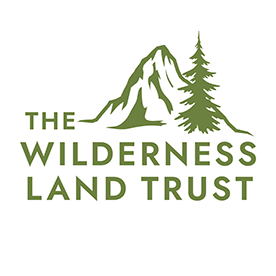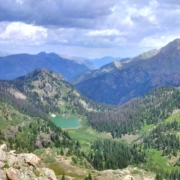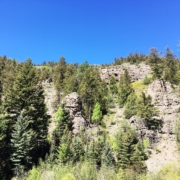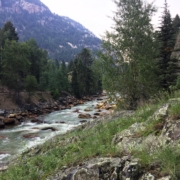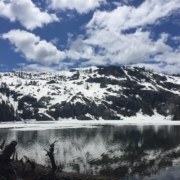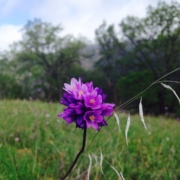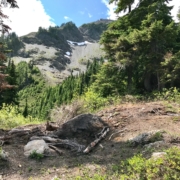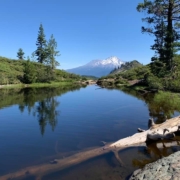A Tale of Two Emerald Lakes: Protecting Colorado’s Weminuche Wilderness
September 22, 2023-
The Trust recently completed the transfer of a 7.5-acre property on the slopes above Emerald Lake in the heart of Colorado’s Weminuche Wilderness. The project builds on two adjacent properties which the Trust already transferred into public ownership to be added to the wilderness area in 2020.
You may have heard of Emerald Lake as a popular backpacking destination in the Weminuche Wilderness. If you have, it’s almost certainly another Emerald Lake. Somewhat confusingly there are two named Emerald Lakes in the wilderness area (plus a Little Emerald Lake), and while both are accurately named for their emerald green waters, they are quite different. The Emerald Lake you may know is an hour’s drive and ten-mile hike from the small city of Durango. Sitting at 10,000 feet it is the third largest natural lake in Colorado and attracts backpackers ranging from solo hikers to families to groups of Boy and Girl Scouts. Local outfitters also guide horse packing trips to a site just above the lake. Generations of wilderness visitors have come to camp along Emerald Lake, some on their first backcountry tip, to see the vivid Milky Way reflected in its still waters, to listen to great horned owls calling through the treetops, and to watch the sun rise over the eastern ridge.
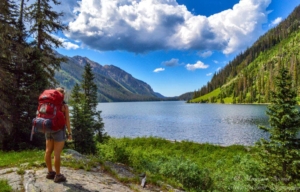
A backpacker at the popular Emerald Lake (Photo by Alex Gulsby from VisitDurango.org)
The Emerald Lake of the Trust’s recent transfer is some 13 miles west of the popular Emerald Lake and is 3% of the size. This Emerald Lake sits just above treeline at 11,300 feet and is surrounded by fragile alpine tundra. It’s about a mile and 1,500 ft climb through a dense drainage from the nearest trail and attracts very few and only the most intrepid of wilderness visitors. Alpine lakes like this serve as important biodiversity hotspots in the harsh high-elevation environment. The Trust’s work to protect even small properties in these areas conserves habitat for wildlife and rare plants like Heil’s Tansy Mustard.
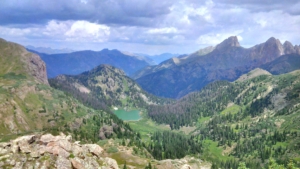
The ‘other’ Emerald Lake viewed from the Trust’s recently transferred property
While very different, both Emerald Lakes play important roles in our national wilderness landscape. We need wild places where families can go to unplug and explore together, just as we need wild places void of popular trails and campsites where wildlife can move unencumbered by human presence. Visitation to our National Forests increased by more than 20 million between 2016 and 2019 and skyrocketed by another 18 million from just 2019 to 2020. This trend was even more pronounced in wilderness areas where visitation almost doubled in 2020 after four years of minimal growth. These statistics represent many more people, and more diverse people, having the opportunity for life-changing wilderness experiences for the first time. And that’s something to celebrate in its own right. But it can also put a strain on natural resources and managing agencies. In 2021 USFS crews picked up 397 contractor-sized trash bags of garbage in the Columbine Ranger District, where the Weminuche Wilderness is located, showing the need for education to teach all visitors, whether it is their first visit or hundredth visit, how to recreate responsibly and leave no trace.
Growing visitation also shows how important it is to protect places like the ‘other’ Emerald Lake from threats of development. Our work to protect these places, largely unknown and unglamorous in the public eye, is critical in balancing the needs of wilderness landscapes and ensuring a refuge for nature and nature alone.
